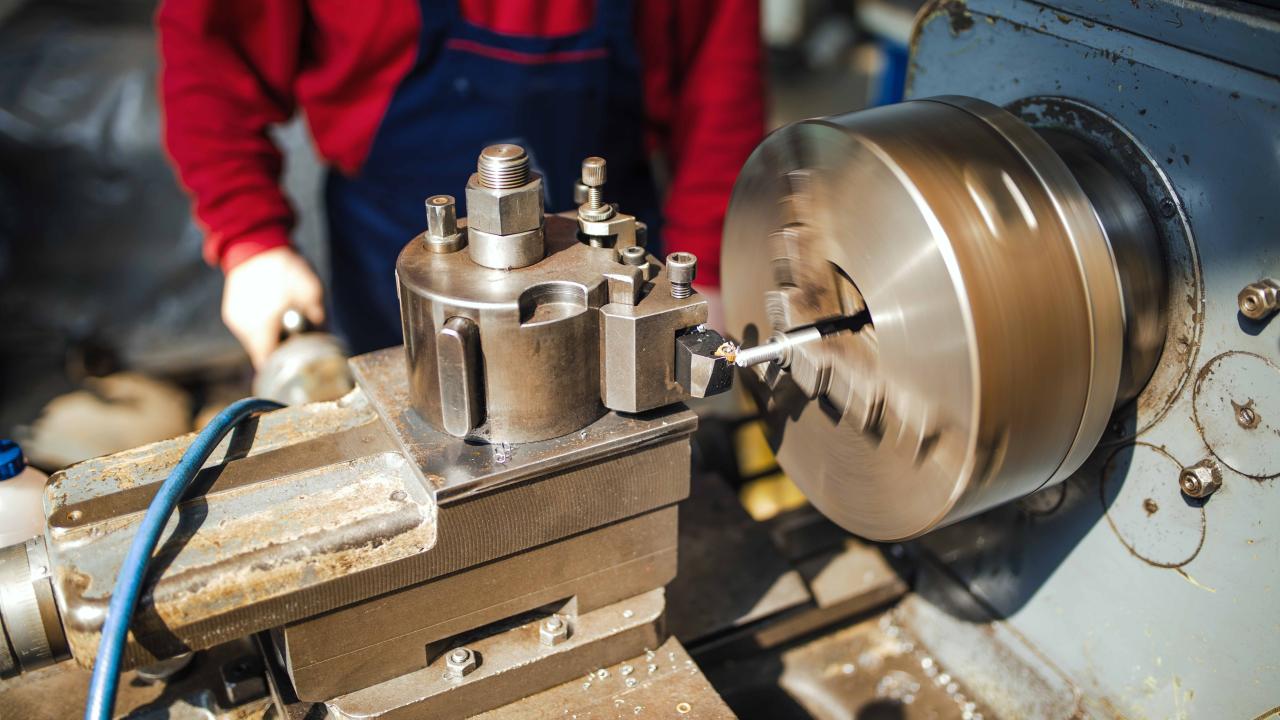
Tool and die makers
make, repair and modify custom-made tools, dies, jigs, fixtures and gauges using various metals, alloys and plastics that require precise dimensions.
On This Page
Full NOC Description
Tool and die makers make, repair and modify custom-made, prototype or special tools, dies, jigs, fixtures and gauges using various metals, alloys and plastics which require precise dimensions. They are employed primarily in manufacturing industries such as automobile, aircraft, metal fabrication, electrical machinery and plastics, and in tool and die, mould making and machine shops. This unit group also includes metal patternmakers and metal mould makers. Apprentices are also included in this unit group.
Main Duties
This group performs some or all of the following duties:
- Tool and die makers
- Read and interpret engineering drawings and specifications of tools, dies, prototypes or models
- Prepare templates and sketches, and determine work processes
- Compute dimensions and tolerances and set up machine tools
- Position, secure, measure and work metal stock or castings to lay out for machining
- Set up, operate and maintain a variety of conventional and computer numerically controlled (CNC) machine tools to cut, turn, mill, plane, drill, bore, grind or otherwise shape workpiece to prescribed dimensions and finish
- Verify machined parts for conformance to specifications using precision measuring instruments such as verniers, callipers, micrometers, coordinate measuring machines (CMM) and electronic measuring devices
- Fit and assemble or disassemble parts using hand tools
- Test completed tools, dies, jigs or fixtures for proper operation
- May program CNC machine tools.
- Metal mould makers and patternmakers
- Machine, fit and assemble castings and other parts to make precision models of required shape such as metal patterns, core boxes and match plates
- Machine, fit and assemble parts to make metal moulds and cores for plastic injection moulding, or other production processes
- Lay out, shape and assemble patterns of metal, wood, plastic and other materials from blueprints, models or templates
- May program CNC machine tools.
Also Known As
- die finisher
- die maker
- jig maker
- metal mould maker
- metal patternmaker
Employment Requirements
Completion of secondary school is usually required.
- Completion of a four- or five-year tool and die making apprenticeship program or A combination of over five years of work experience in the trade and some high school, college or industry courses in tool and die making is usually required to be eligible for tool and die trade certification.
- Tool and die maker trade certification is available, but voluntary, in Newfoundland and Labrador, Nova Scotia, Prince Edward Island, New Brunswick, Quebec, Ontario, Manitoba and British Columbia.
- Red Seal endorsement is also available to qualified tool and die makers upon successful completion of the interprovincial Red Seal examination.
- Mould makers usually require completion of a four-year apprenticeship or college program in mould making.
- Trade certification for mould makers is available, but voluntary, in Quebec and Ontario.
- Patternmakers usually require completion of an apprenticeship or college program in patternmaking.
- Patternmaking trade certification is available, but voluntary, in Ontario.
Provincial Regulation
- Provincially Regulated: Yes
- Compulsory: No
- Red Seal: Yes
Regulation Body
The following graph shows the percentage of men and women working in this occupation in New Brunswick.
Data legend
The following graph shows the breakdown of all persons working in this occupation in New Brunswick by age group.
Data legend
The following graph shows the breakdown of all persons working in this occupation in New Brunswick by highest level of education achieved.
Data legend
The following graph shows the industry groups in which the largest shares of persons working in this occupation in New Brunswick are employed. Small percentages for all top three industry groups may suggest employment for this occupation is widely distributed amongst many industry groups.
Data legend
The following graph shows the breakdown of all persons employed in this occupation in New Brunswick by which economic region they reside in.
Data legend

Economic Regions
The following map displays New Brunswick’s five economic regions. An economic region (ER) is a grouping of counties, created as a standard unit for analysis of regional economic activity across Canada.
The following graph shows the average salary of all persons employed in this occupation in each of New Brunswick’s five economic regions.
Data legend

Economic Regions
The following map displays New Brunswick’s five economic regions. An economic region (ER) is a grouping of counties, created as a standard unit for analysis of regional economic activity across Canada.
The following represents the median hourly wage of all persons employed in this occupation in each of New Brunswick’s five economic regions.
The following shows the average salary of everyone who worked full-time and year-round in this occupation across each of the Atlantic Provinces and nationally.
The following represents the number of job openings that are expected to occur in this occupation over the next three and ten years respectively, broken down by openings expected to result from growth (“new jobs”) and openings expected to result from attrition (death and retirements).


Share this page
No endorsement of any products or services is expressed or implied.